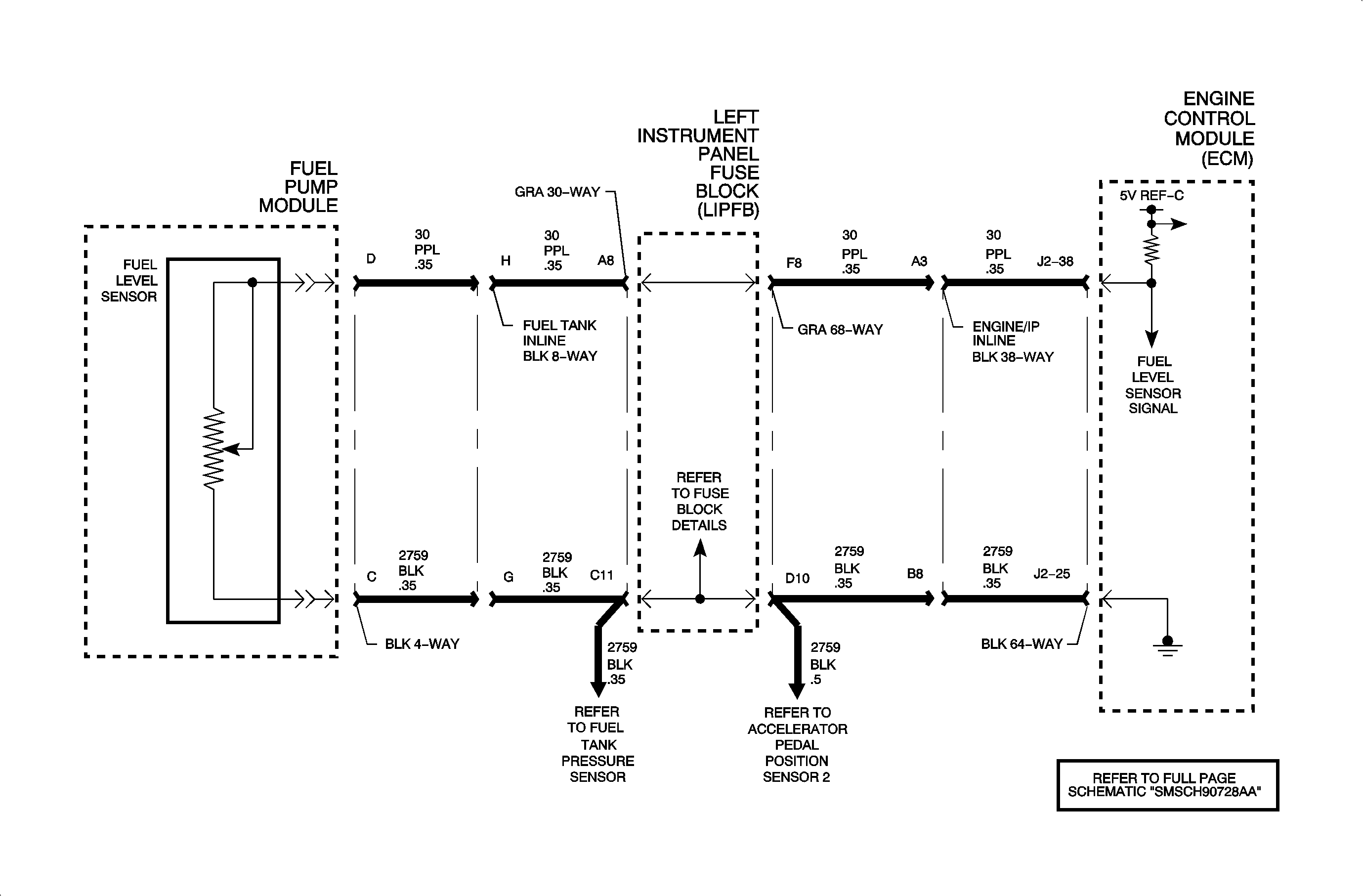
Circuit Description
The fuel level sensor is a variable resistor that varies resistance according to changes in the level of fuel in the fuel tank. The ECM supplies a 5 volt reference through a pull-up resistor to the sensor, which is connected to ground. When the level in the fuel tank is high, the sensor resistance is low, indicating low voltage on the signal line. As the fuel level decreases, the sensor resistance increases and the voltage increases on the signal line. The ECM uses the signal voltage to determine the fuel tank level. The ECM will send this fuel level information over the controller area network (CAN) link to the BCM. The BCM in turn will average this information with respect to vehicle speed, then send it over the Class II link to the I/P cluster which will position the fuel gage. DTC P0461 will set if the fuel tank level sensor signal voltage at the ECM does not change a calibrated amount after the vehicle has been driving a long distance.
Conditions for Setting the DTC
| • | DTC P0461 will set if the fuel level does not change more than 15 liters (3.95 gallons) when the ECM calculates 20 liters (5.26 gallons) of fuel consumption. |
| • | DTC P0461 diagnostic runs once per ignition cycle. |
| • | P0461 is a type D DTC. |
Diagnostic Aids
DTC P0461 sets due to a fuel level that does not change by an expected amount the ECM calculates over a period of driving time.
Use the scan tool to monitor FUEL LEVEL VOLTAGE when raising the vehicle from the back. The percentage should change, indicating a moving float.
Possible causes of a static fuel level:
| • | The fuel sender float is stuck or perforated. |
| • | The fuel sender sweep arm is stuck. |
Fuel level sensor resistance is 19 ohms with the float at the top position, indicating a full tank, through 251 ohms with the float at the bottom position, indicating an empty tank.
